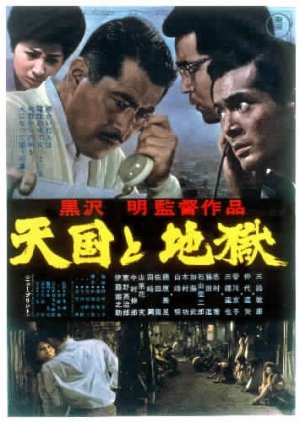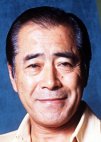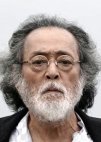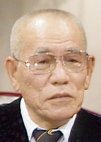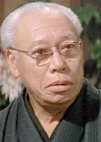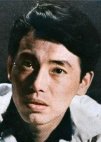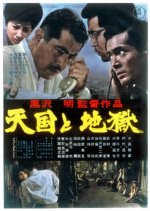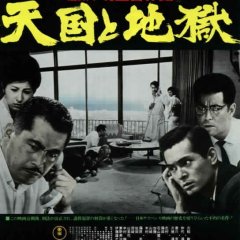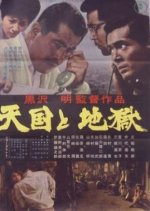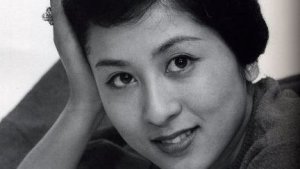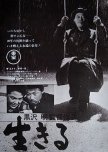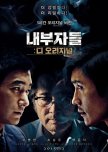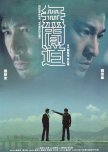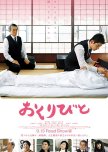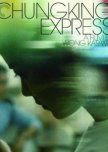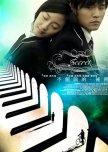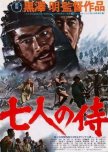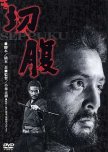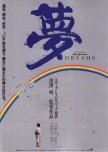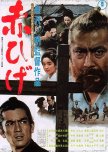 When the Wild and the young Come Out and Play
When the Wild and the young Come Out and Play "High and Low" focuses on Gondo Kingo, a powerhouse executive in the Japanese shoe industry. In the midst of an attempt to take over his company, a proposition that throws him in hock down to his own furniture, he's hit by a huge ransom demand, with a twist -- the kidnapper takes, not his own son, but his chauffeur's. (Source: Paul Attanasio, WashingtonPost) ~~ Adapted loosely from the novel “The King’s Ransom” by Ed McBain Edit Translation
- English
- magyar / magyar nyelv
- dansk
- Norsk
- Native Title: 天国と地獄
- Also Known As: Tengoku to Jigoku
- Screenwriter & Director: Kurosawa Akira
- Genres: Thriller, Mystery, Drama
Cast & Credits
- Mifune Toshiro Main Role
- Nakadai Tatsuya Main Role
- Kagawa KyokoGondo ReikoSupport Role
- Tono Eijiro[Factory worker]Support Role
- Shimura TakashiChief of Investigation SectionSupport Role
- Kimura IsaoDetectiveSupport Role
Reviews

This review may contain spoilers
"Why do you think we have to hate each other?"
Director Kurosawa’s High and Low delved into the police procedure he loved with a story of a high-profile kidnapping and stakes that were also unbelievably high. Some would fall to new lows and others would rise from the lows they were buried in. High and Low, also known as Heaven and Hell, was a fascinating look into people’s true characters when thrust into a fiery crucible.Mifune Toshiro played Gondo Kingo, a man who rose from an apprentice in a shoe factory to running it. In the opening scene, several executives are planning a takeover of the company. The sales have been flat because the Old Man insisted on utilitarian women’s shoes. The execs wanted to make cheap disposable shoes. Gondo wanted something in the middle, to make stylish high quality shoes and earn greater profits in the long run. The executives threatened to use their power to push him out of the company unaware that Gondo had his own plan. After throwing the men out of his house he revealed to his wife and right-hand man that he had leveraged everything he owned to buy enough shares to take over the company—50 million yen for the deposit with 100 million yen remaining to be paid later. Though not a samurai he was deeply involved in a business war rife with risk, back stabbings and betrayals.
Gondo’s move was brilliant, ambitious, and dangerous. All that needed to be done was for his subordinate to transfer the check. As fate would have it a call came in telling him his son had been kidnapped and the ransom was 30 million yen. Wrecked he was willing to pay it even though it would ruin him. Another turn, the child kidnapped was not his own, but his chauffer’s son. The kidnapper doesn’t care, he wants Gondo humiliated and brought down from his mansion on the hill. A mansion in plain sight of the people who live in squalor below. A mansion with air conditioning and sound proof windows leaving the family insulated from the poverty just beneath them.
Nakadai Tatsuya, played the lead inspector of a team that arrives at the mansion. He gives a likeable performance, expertly nuanced with personality. Now the thrust of the moral dilemma begins. Does Gondo have the responsibility to destroy his family’s lifestyle and future to save a child not his own? He is unconvinced. He might have ended up as the tragic MacBeth character in Throne of Blood if not for the fact that this wife was one of good conscience. Gondo’s rule of thumb is kill or be killed. Reiko tells him he must not lose his humanity in his desire for wealth and position. She knows if he lets the boy die his emotional ruin would be greater than their financial ruin and something he would never recover from.
The scenes with the police officers, Gondo family, and Aoki the driver and boy’s father are tense with emotions rumbling below the surface breaking through from time to time. As Gondo takes the ransom money on the train with officers hidden about, it was a surprisingly taut scene filmed on a real train.
Once the boy is returned, the movie turns largely into a police procedural as a huge task force is assigned to the case to find the culprits and return the ransom money. In a time before cell phones, CCTV cameras, and DNA testing the police relied on canvasing the neighborhoods and old school detective work. Nakadai’s Tokura is determined to arrest the suspects on the highest charge they could. At the time, the jail sentence for kidnapping was minimal and the criminals knew it. Along the way, it also turned into a murder case, upping the ante. Public sympathy was squarely in Gondo’s corner, the people loved the man who sacrificed everything to save a child. Tragically, Gondo's fate was sealed for his creditors reminded him that good will does not pay the bills. Tokura played Gondo’s avenging angel, leaving no stone unturned looking for the man who brought him down. As determined as he was to save the child’s life, he was also as determined to save Gondo’s. Even when he was reciting what amounted to pages of narrative, Nakadai gave a riveting performance. This was a 180 from his unhinged performance as the gun wielding villain in Yojimbo, making me appreciate his acting skills all the more.
Mifune played a character every bit as courageous as any samurai in his repertoire. Though calm, his barely caged energy rippled under the surface. His agony, strained anger, despair, empathy, and relief all on display in a restrained performance brought this complex character to life. Unlike most of their collaborations, this time Mifune wasn’t always stage center, this was a group effort. Kagawa Kyoko gave a lovely performance as Gondo’s conscience. Though her character Reiko swore she could live in poverty, Gondo knew she’d never gone hungry or known a moment of want.
When Gondo and the kidnapper finally meet, Kurosawa made amazing use of his shots. Each man’s reflection to the side of the man in focus across the glass in the prison room was masterful. Gondo’s eyes misty, seeing the obsessed, rage-filled man before him, unsure if his display of wealth had created him. Takeuchi, the kidnapper who had lived below the mansion in the sweltering heat seething with hatred for Gondo. The last straw for Takeuchi, was knowing that Gondo lived untouched by the oppressive heat, smell, and noise, in his insular air-conditioned house in full view for all to see. In his obsession to bring Gondo down to his level, he destroyed himself in the process. At the same time, though Gondo’s position and possessions had been stripped away he had grasped at the chance for renewal. A man who still enjoyed working with his hands, still loved shoes, still loved life, the upheaval had only brought into sharp focus what was important to him. He might be ambitious but he was also a good man with a resilient spirit. Kurosawa makes his characters earn, if not a happy ending, at least their inspiration.
Unlike Stray Dog where Kurosawa humanized the villain, laying much of the blame on materialism and crime as a means of surviving, in this film he seems to relish in showing the kidnapper’s obsessive madness. The film was a criticism of the lax kidnapping laws. The next year the laws were strengthened as there had been several heinous child kidnappings.
Once again, Kurosawa also sharply criticizes the materialism and gap between the haves and have nots. A cesspool like in Drunken Angel makes another appearance where the people in view of the mansion live. A master of the wide angle, he often filled it with a variety of people and moods. Interestingly, he also made use of real American military in a rousing bar scene as Yokohama had a port where the military resupplied and shipped out. I also found his use of the villain’s sunglasses fascinating. They reflected light and his surroundings, one particularly artful scene when he arises in a garden with the flowers’ and sun’s reflections blending with the flora, hiding his cruel intentions. For the most part all of the performances were energetic but restrained and filled with charisma. Even the villain who had few words was given the chance to come unraveled with the actor making the most of his scenes.
If you enjoy police procedurals, Kurosawa and Mifune, riveting performances, or morality plays, this is not one to be missed. High and Low was made with great care and skill, showing how dire situations can bring a man low or bring a man high and sometimes a little of both.
1/20/23
Was this review helpful to you?

60's Parasite
The first Kurosawa film that I finished, last year I tasted Rashomon but it was only willing to watch it until the opening.In the first half, I think it will be just a normal kidnapping drama, rather boring and a bit annoyed by his wife and his driver, Gondo, there is something wrong because the money ends up not being used to buy shares (somehow annoyed).
After finding the driver, this film starts to feel exciting, hunting the kidnapper while diving to the slum side makes you understand the kidnapper's feelings too, especially while looking at Gondo's house from the slum, he wants to bomb his house.
I really like it when the police hold a meeting, I feel like I'm putting up a puzzle, it's fun.
Was this review helpful to you?

